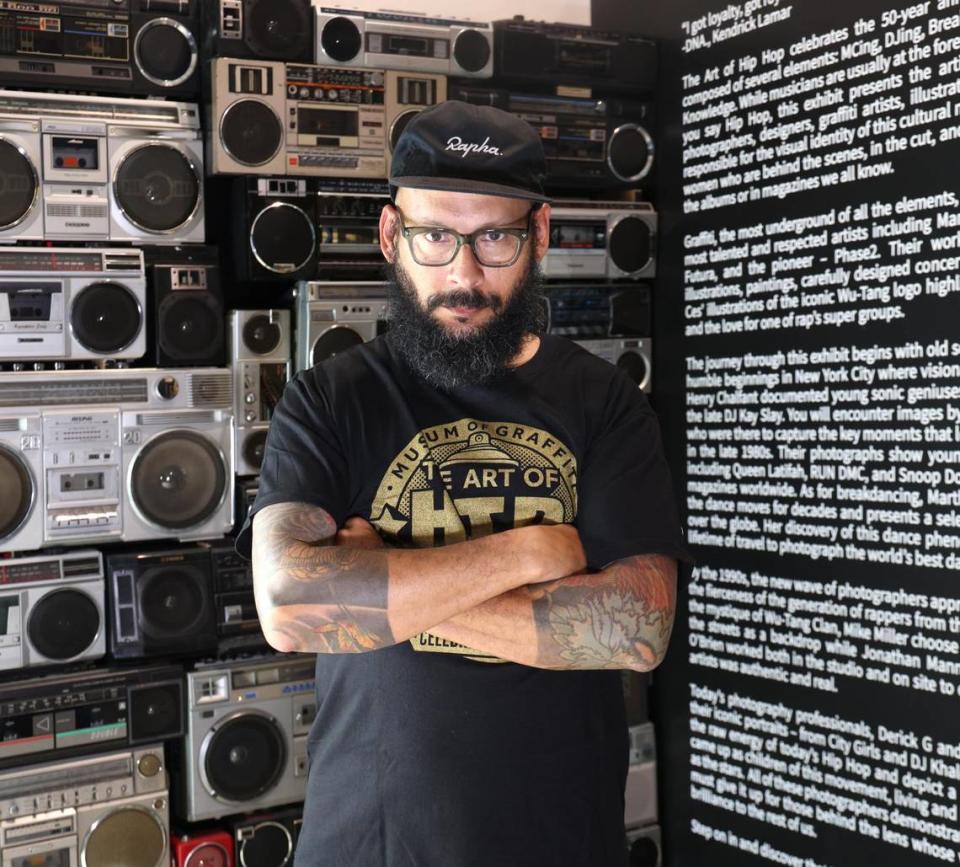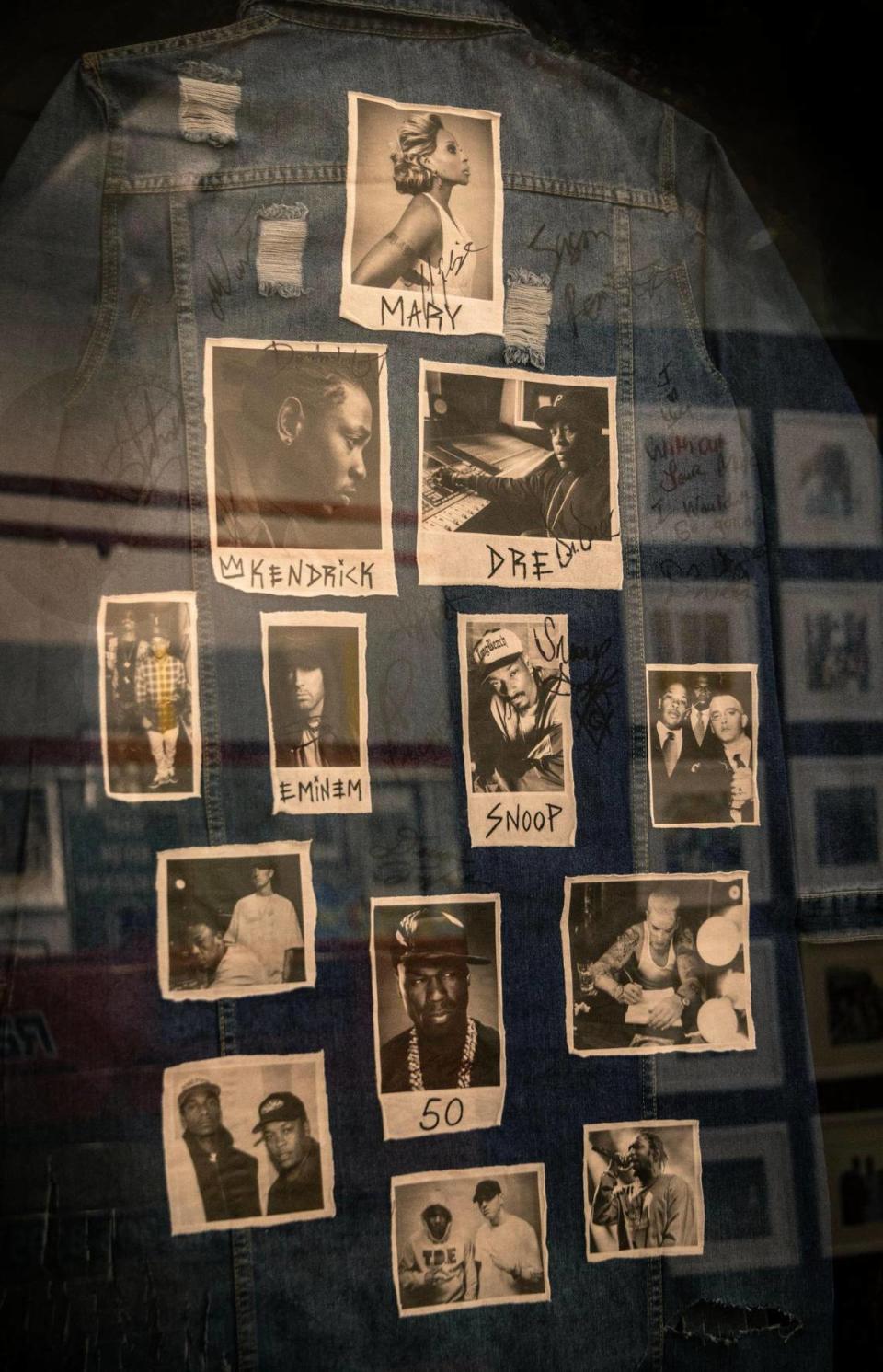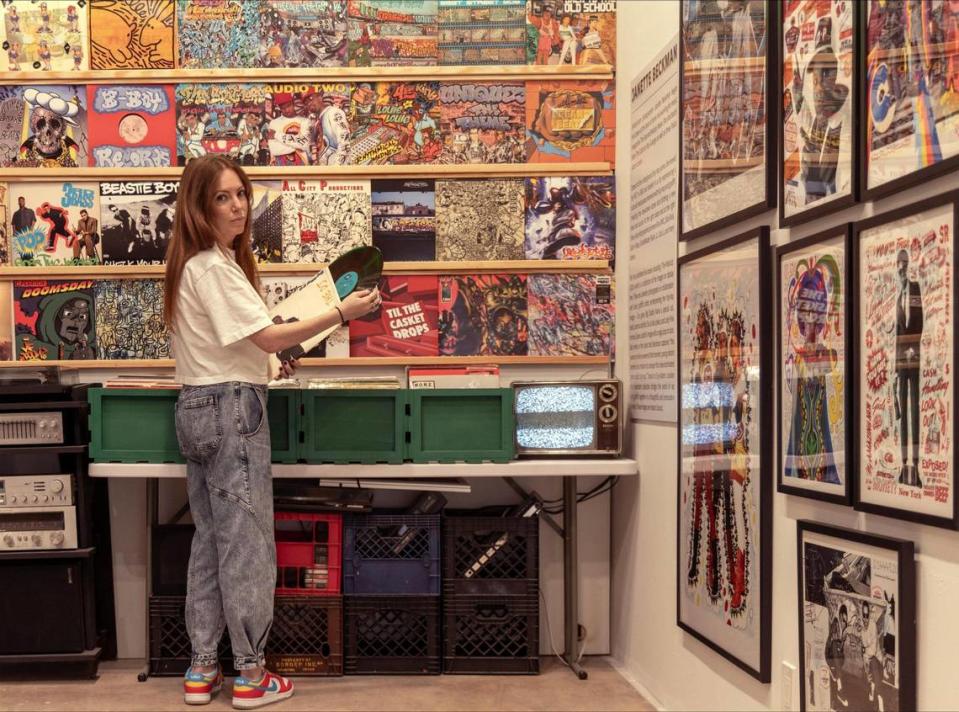Miami’s newest museum opened during Art Week. It’s dedicated to the history of hip-hop
- Oops!Something went wrong.Please try again later.
Derick G is tired.
In the month leading up to the opening of The Art of Hip-Hop, Wynwood’s latest museum honoring the genre, the photographer has built a small-scale record store, scoured his closet for ephemera and even helped design the bathroom reminiscent of “8 Mile” (the one where B-Rabbit throws up mom’s spaghetti). But as the room swirls with workers putting the final touches on the opening exhibition, you would never know just how fatigued the Miami native truly is.
“I want this to be as badass as they want it,” said Derick G, born Derick Garnier. “This is not work for me.”
Black art, hip-hop and skateboarding: A guide to some of the coolest events for Miami Art Week
Garnier’s commitment exemplifies one of the very traits of the Art of Hip-Hop, which opened Tuesday with its inaugural exhibition “From the Bronx to the Beach,” looks to uphold: dedication. A museum designed to pay homage to the creators of hip-hop’s visual identity, the Art of Hip-Hop fuses immersive activities with education, a combination that provides even the most casual fan a better understanding of hip-hop’s growth within the United States.
“There’re so many people who are foundational to hip-hop who are unknown,” said Allison Freidin, co-founder of The Art of Hip-Hop and Museum of Graffiti.
Hip-hop has been very lucrative for the Jay Z’s of the world, but there are so many unsung heroes that were fundamental to his success. There’s the person who designed the font that appeared on his Def Jam albums (Cey Adams). Or the person who photographed several of Hov’s album covers (Jonathan Mannion).

“Most people just know their work through the eyes of the artist they’re working for,” The Art of Hip-Hop and Museum of Graffitti co-founder Alan Ket said.
In addition to his role in the museum space, the Brooklyn native is a graffiti artist, author and co-founder of Complex magazine. He calls the evolution of hip-hop something “beyond my wildest imaginations” and the exhibit itself a “manifestation of my love for hip-hop.”
“What you see around you are my peers,” said Ket, who also curated the exhibit. “These are the people who I’ve known for over 20, 30 years. I know them because I was on the inside but most people just know their work.”
The exhibition starts at hip-hop’s inception with a description of Kool Herc, the person credited with throwing the genre’s first party on August 11, 1983. That very party becomes a catalyst for talking about one of the first visual artists of hip-hop: the people who created the party flyers. It then jumps into the fashion – highlighted by an original Puma sweatsuit from the 1980s – then into graffiti, hip-hop films and photographers. The exhibit gives the little known history of someone like Adams, a graffiti artist turned Def Jam’s founding creative director. In addition to Jay-Z, he also designed the logos for The Beastie Boys, Public Enemy and Mary J. Blige.

“Cey Adams, when I was growing up, he was already a legend in the streets, forget about graphic design,” Ket said. “Graphic design was some adult stuff. But him as a teenager, made an impact on hip-hop culture.”
The exhibit also pays homage to regions besides New York and doesn’t downplay the South’s contributions. This was rather important, said Ket.
“One of the things I realized as I saw what was happening nationally around hip-hop 50 is that it was a very New York-centered story with a sprinkling of Los Angeles,” Ket said. “That’s really, to me, not what hip-hop is nowadays. It’s global and we’re not even going global.”
A giant portrait of Uncle Luke and the 2 Live Crew hangs in the exhibit along with pieces of memorabilia. And as visitors near the exit, they are treated to Garnier’s photos of Trick Daddy, Birdman and DJ Khaled – many of which were taken in Miami.

“This is a labor of love from the entire community,” Freidin said. It’s “everybody coming together to tell a story. It takes a village.”
Added Garnier: “I’m just happy to be in a room with guys I looked up to as a kid. To think that I was in high school with the DMX ‘Flesh of My Flesh, Blood of My Blood’ CD in my backpack and now I’m in the same room with [Mannion] the guy who shot that, I’m friends with him and I’m being mentioned in articles with him, that’s great.”
IF YOU GO:
What: The Art of Hip-Hop
When: 11 a.m.- 6 p.m.
Where: 299 NW 25th St., Miami
For more information, visit http://www.artofhiphop.com

